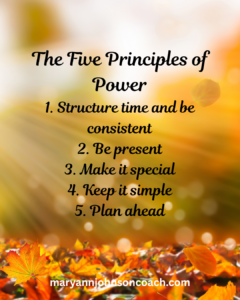 Recently, I wrote about principles that I consider powerful for a healthier and happier family life. Last week, we delved into principles one and two. Today, I will share information and examples on principles three and four.
Recently, I wrote about principles that I consider powerful for a healthier and happier family life. Last week, we delved into principles one and two. Today, I will share information and examples on principles three and four.
As I said last week, as you internalize these principles, you will see greater success in all parts of your life. This is a promise I can make based on my own experience.
Principle 3
Make it special. When we want someone to look forward to something, we make it special. We do this at weddings, birthdays, and on holidays. But it’s just as important in our daily family activities. Let me share an example from my own life.
I recall a trip we made from Idaho to Utah. We were moving, and Mom was driving us to meet our dad at the new home. She had all nine of her kids in the car. My two sisters and I were in the very back of our station wagon. (No seatbelts in those days.). I was fourteen, Cindy was 13, and Shirley was twelve. Old enough to behave, right? At one point, we were so bored that we began fighting. My mom yelled repeatedly from the driver’s seat for us to stop because we were riling up the other kids. After a lengthy time, Mom pulled over, raced to the back of the car, popped the window open, and reached for us. We, however, were scrunched up at the back of the middle seat, and she couldn’t reach us. She told us in no uncertain terms to stop fighting and remain calm, that we were almost there. Then she got back in the driver’s seat. I will never forget what happened next. I looked at my sisters, they looked at me, we smiled mischievously, and went at it again. I know, we were being naughty on purpose, but we were bored!
I learned something from that experience that helped me when I traveled with our seven kids: make it special! I learned even more as I watched my husband. Don knew how to do this well. On any trip he planned, he would insert one or two stops at city parks. Everyone got out for fifteen minutes, and then we hit the road. At first, this drove me nuts. I mean, we needed to get where we were going. Over time, I saw how helpful this was for our children. They loved our trips and looked forward to the short stops. Don knew how to make it special.
I had a different way of accomplishing this. I would make goodie bags and hand them out at the beginning of the trip. They contained homemade treats and cheap toys or books from the dollar store. In our day, that was the town drug store. : ) Sometimes, rather than a goodie bag, I would have a bin of books, games, cards, coloring materials, etc. that I kept just for road trips. They weren’t brought out at any other time. We also had a few car games, and we often sang as a family. Yes, my kids liked that. Here is the key – what isn’t always available is special when it is available.
This idea of making it special applies to many things, such as going to church, doing chores, or bedtime. Really? Yes. I have a special bag that goes to church with me. When the grands are reverent, they get to pick a treat out of the bag. I’ve been using this bag for over ten years, and although all the grands are now teens and don’t need the bag to be reverent, they enjoy getting it anyway. It’s become a once-a-week tradition. : ) Maybe you have special books that are only used at church. Whatever isn’t always available feels special.
Even chores can be made special. After Saturday chores, have a simple treat. As each child or teen finishes their assigned items, they can have a treat, no waiting on others. You could have a ten-minute dance party just before everyone goes off to do chores or even gather when everyone is done. Laughter, smiles, and treats can make even the most arduous or mundane thing special.
And what about bedtime? I’ve learned that even bedtime can be more stress-free when it’s special. My grands in Washington were notorious for not going to bed, and when in bed, calling out over and over again. When I visited, I instituted something special. I would sit by the bed and ask two questions: What was the hardest thing that happened today? What was the best thing that happened today? They would each get to answer the question, and we talked about it. They loved this. When we were done, each was to lie still, close their eyes, and breathe. I would sit there for another ten minutes while they complied. By then, they were usually asleep.
Another simple way to make bedtime special is by giving each child just three minutes to hug, cuddle, or talk. Then say goodnight and move to the next bed or room. I’ve had parents tell me that doing this one simple thing has made a difference for their kids because it makes bedtime special.
Principle 4
Keep it simple. As in the above examples, while working on making things special, we need to remember to keep it simple. When we make things hard, expensive, time-consuming, or too costly, the activity usually dies a slow death. We had a weekly family night. There was prayer, a story, and a simple activity. We ended with a treat of some kind. This was a family activity suggested by our church. As we went along, many members of our congregation began making this simple family home evening a big deal. Bigger treats. More challenging activities. More resources were required. I found myself letting it slide because I didn’t have the time or energy for all the preparation. I felt that if I wasn’t doing all the ‘stuff’ other families were doing, my kids would feel ours was lame. What was lame was that we stopped doing a fun thing that brought our family together. Eventually, we returned to simpler content, and it returned to a weekly event.
Here is a cool idea a friend had for her children’s bookshelves. She would periodically remove books and add in books that had been removed months earlier. This kept her children’s interest in the books because they felt new. She wasn’t constantly having to buy books or go to the library. This also got her kids to engage with books that they ordinarily wouldn’t have read. It helped make their family reading time more exciting.
Sometimes you’ll have an activity that you think is special, but your kids don’t, and it isn’t as successful as you hoped. That is OK. Get your ego out of the way. Try another activity next week or new items in the car for the next long drive. Be willing to experiment.
I did some work for a woman who taught me a profound lesson. Her closet was so neat, and I asked her how she managed it. She replied that if she bought something, then she had to give something away. This simple ‘rule’ that she had for herself kept her whole home in far better order. She had learned to keep it simple.
We can expand this idea to many areas of our lives. Take a vacation, for example. Don’t overload it. A few activities, well thought out and engaged in, beat a schedule that wears everyone out and leads to misbehaving, irritation, and contention.
When we add a new commitment to our calendar, we should remove something else. One of the great tragedies for families is that we are so “booked” that we do not have time for one another; we cannot enjoy one another. Running from one thing to the next until we are totally worn out is a good way to miss our family life, which is really the life we want. When we keep things simple and consistent, our results skyrocket.
We want to have a real connection in our family. We want peace and calm as often as we can manage it. We want activities that bond us together.
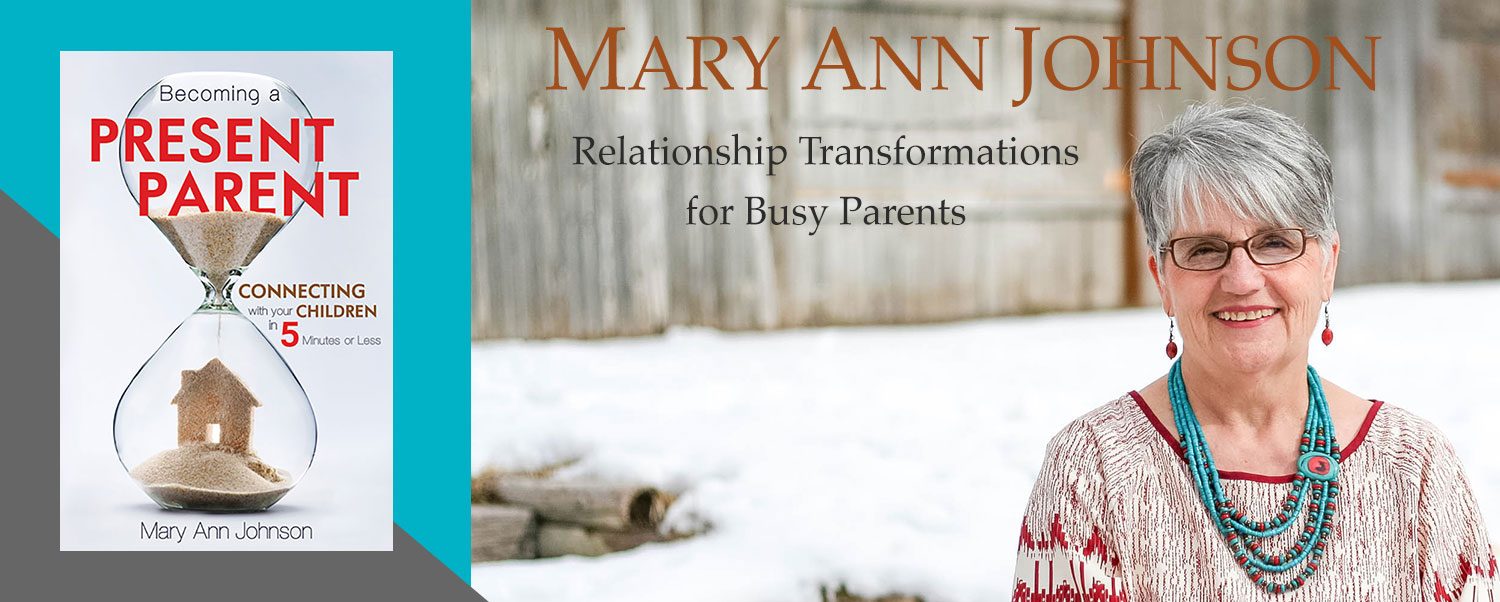

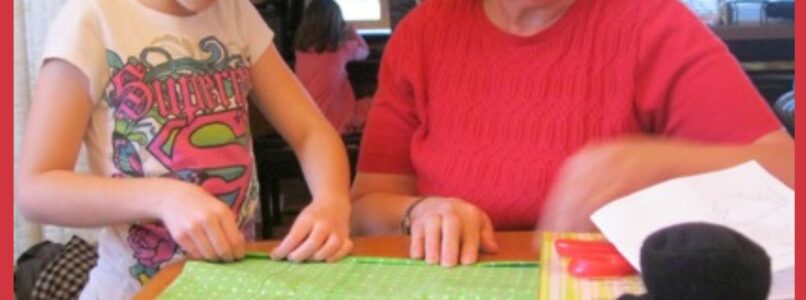
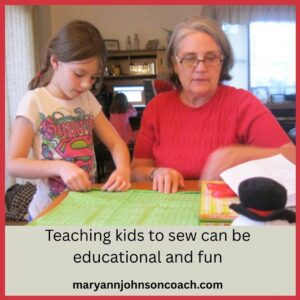 In 2012, the week after Christmas, Don and I traveled to Colorado to visit our grandkids. We loved and missed our daughter and her husband, but we went to see the grands! I’m always grateful for the time we took, in those early days, to spend time with them. Ashley, the grand in this story, is now in her mid-twenties and a wonderful hairdresser. They grow so fast, and you can’t reclaim their childhood. Hence, the perilous drive in the winter. : )
In 2012, the week after Christmas, Don and I traveled to Colorado to visit our grandkids. We loved and missed our daughter and her husband, but we went to see the grands! I’m always grateful for the time we took, in those early days, to spend time with them. Ashley, the grand in this story, is now in her mid-twenties and a wonderful hairdresser. They grow so fast, and you can’t reclaim their childhood. Hence, the perilous drive in the winter. : )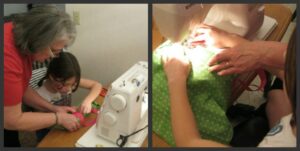 them their job is to push the material forward into the feed dog, and keep a straight line. Then I worry about the pedal. That way, they learn to do one thing before trying to do two.
them their job is to push the material forward into the feed dog, and keep a straight line. Then I worry about the pedal. That way, they learn to do one thing before trying to do two.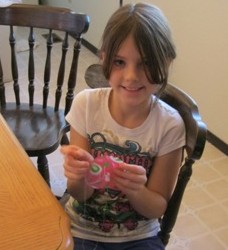
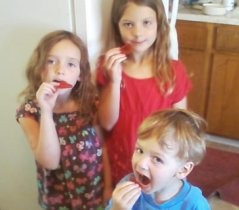
 Later, I found Lizzy and Ashley sitting at the bottom of the stairs, looking at the books they brought home from the library. They had originally gone out to ride their scooters, but the books were so compelling that they never made it to the driveway. They were comparing the crystals in each other’s books, chatting away about the shapes, sizes, and colors.
Later, I found Lizzy and Ashley sitting at the bottom of the stairs, looking at the books they brought home from the library. They had originally gone out to ride their scooters, but the books were so compelling that they never made it to the driveway. They were comparing the crystals in each other’s books, chatting away about the shapes, sizes, and colors.
 Remember that monthly call I have with my friend Joy Petty? We had another invigorating conversation I want to share. I’m no expert on this topic, but I have had experience with it. Joy is an expert.
Remember that monthly call I have with my friend Joy Petty? We had another invigorating conversation I want to share. I’m no expert on this topic, but I have had experience with it. Joy is an expert.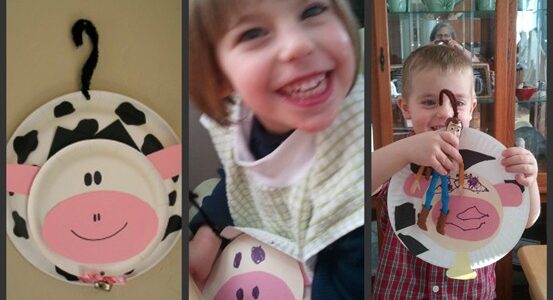
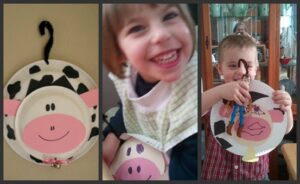 When I first began writing and publishing articles, it was in 2010. My grands, the ones I still live with, were all under five. As their grandma, I wanted to find ways to play and connect. I’m not a board game person! Tea parties and dress up are not on my list of fun things! The truth is, I like learning. I always have. I thought a lot about how I could ‘play’ with my grands and make it work for all of us. What I came up with was learning for fun. Every Tuesday, for several years, we would gather and play/learn. They looked forward to it and occasionally would tell me what they wanted to know or ask about at our next Tuesday session. It was a hit and was called Grandma School. : )
When I first began writing and publishing articles, it was in 2010. My grands, the ones I still live with, were all under five. As their grandma, I wanted to find ways to play and connect. I’m not a board game person! Tea parties and dress up are not on my list of fun things! The truth is, I like learning. I always have. I thought a lot about how I could ‘play’ with my grands and make it work for all of us. What I came up with was learning for fun. Every Tuesday, for several years, we would gather and play/learn. They looked forward to it and occasionally would tell me what they wanted to know or ask about at our next Tuesday session. It was a hit and was called Grandma School. : ) the pictures and I told them fun cow facts, such as, “Did you know a cow has four stomachs. You only have one, but a cow has four!!” That type of comment is usually followed by a question such as “Why Grandma?” Then we get to learn a bit more. Jack’s favorite cow fact was: “Daddy cows are called bulls and they go Moo really, really loud.” I did such a great daddy cow impersonation that it sent Jack into gales of laughter.
the pictures and I told them fun cow facts, such as, “Did you know a cow has four stomachs. You only have one, but a cow has four!!” That type of comment is usually followed by a question such as “Why Grandma?” Then we get to learn a bit more. Jack’s favorite cow fact was: “Daddy cows are called bulls and they go Moo really, really loud.” I did such a great daddy cow impersonation that it sent Jack into gales of laughter.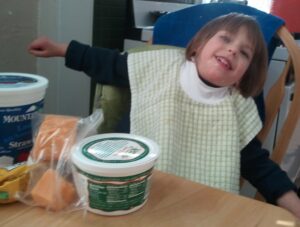 After the books, we did a cow activity. I had created a picture sheet on my computer that showed cool foods that are made from cow’s milk: cheese, cream, ice cream, milk for cereal, cottage cheese, sour cream, etc. I also had the real item on the table, if we had it. We looked at the pictures, talked about each item, and then tasted it. Of course, we all liked the cookie dough best. (It has milk in it!)
After the books, we did a cow activity. I had created a picture sheet on my computer that showed cool foods that are made from cow’s milk: cheese, cream, ice cream, milk for cereal, cottage cheese, sour cream, etc. I also had the real item on the table, if we had it. We looked at the pictures, talked about each item, and then tasted it. Of course, we all liked the cookie dough best. (It has milk in it!)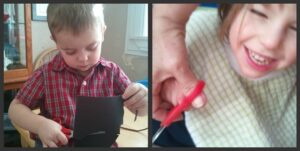 way, but then switched to using two hands and having me hold and turn the paper. Special scissors with 4 finger holes allowed me to help Maggie cut her own cow spots. She was thrilled. (Remember, Maggie, who is now eighteen, has severe cerebral palsy, so doing anything with help thrilled her and still does.)
way, but then switched to using two hands and having me hold and turn the paper. Special scissors with 4 finger holes allowed me to help Maggie cut her own cow spots. She was thrilled. (Remember, Maggie, who is now eighteen, has severe cerebral palsy, so doing anything with help thrilled her and still does.)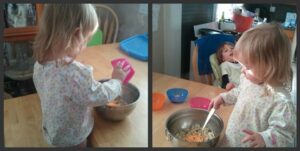 We ended the day by making mac and cheese. Cooking was a favorite activity, so everyone helped. The kids liked tasting the powdered cheese. We had our mac and cheese for lunch, and it was delicious. Maggie, Jack, and Mary decided that having cows in our world is a very good thing.
We ended the day by making mac and cheese. Cooking was a favorite activity, so everyone helped. The kids liked tasting the powdered cheese. We had our mac and cheese for lunch, and it was delicious. Maggie, Jack, and Mary decided that having cows in our world is a very good thing.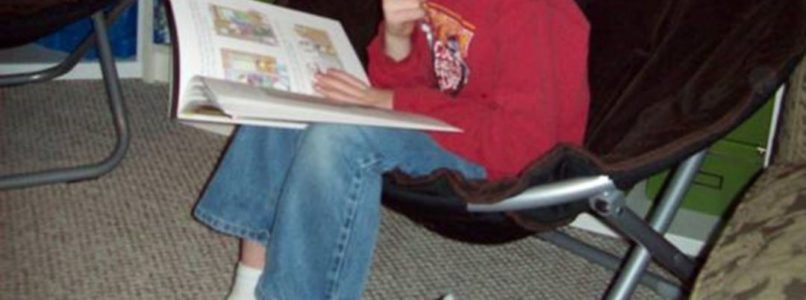
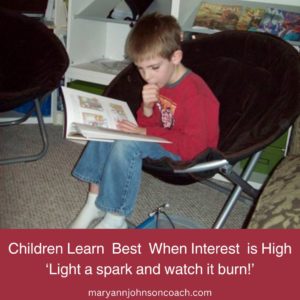 Years ago, I spent a great deal of time with my grands that live in Utah. We lived one block away. This was before we consolidated our two families into a three-generation home. My daughter, Jodie, was homeschooling. At that time, I was teaching and mentoring mothers who homeschooled. Then I made a transition. I realized that many of the excellent things I was teaching applied to a whole spectrum of parenting, not just those who homeschooled.
Years ago, I spent a great deal of time with my grands that live in Utah. We lived one block away. This was before we consolidated our two families into a three-generation home. My daughter, Jodie, was homeschooling. At that time, I was teaching and mentoring mothers who homeschooled. Then I made a transition. I realized that many of the excellent things I was teaching applied to a whole spectrum of parenting, not just those who homeschooled.
 Every mother struggles to bring all that she has to the family table. We all want to teach our children to be kind, to have manners, to be honest, to do their chores, to share, and on and on. We also want to teach skills that can help them as adults. We desire to encourage them to develop talents for the joy of it. It can feel daunting.
Every mother struggles to bring all that she has to the family table. We all want to teach our children to be kind, to have manners, to be honest, to do their chores, to share, and on and on. We also want to teach skills that can help them as adults. We desire to encourage them to develop talents for the joy of it. It can feel daunting.
 I like Kerry Patterson. He is a great writer and from my era, so I relate to everything he writes. Back in September 2012, Kerry
I like Kerry Patterson. He is a great writer and from my era, so I relate to everything he writes. Back in September 2012, Kerry 
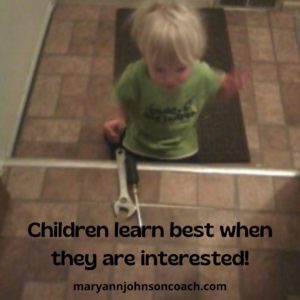 In the next four weeks, I am going to be sharing articles I wrote over ten years ago. Why? Because they were fun, contained great information and when I reread them, I fell in love with my family all over again. I will have a current introduction to each article, but I‘m not going to adjust the information to make it appear that it is in the now. You will see people and situations as they were over a decade ago.
In the next four weeks, I am going to be sharing articles I wrote over ten years ago. Why? Because they were fun, contained great information and when I reread them, I fell in love with my family all over again. I will have a current introduction to each article, but I‘m not going to adjust the information to make it appear that it is in the now. You will see people and situations as they were over a decade ago.
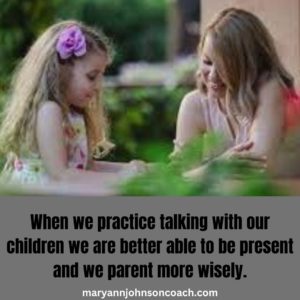 6 Tips for Talking With Kids
6 Tips for Talking With Kids